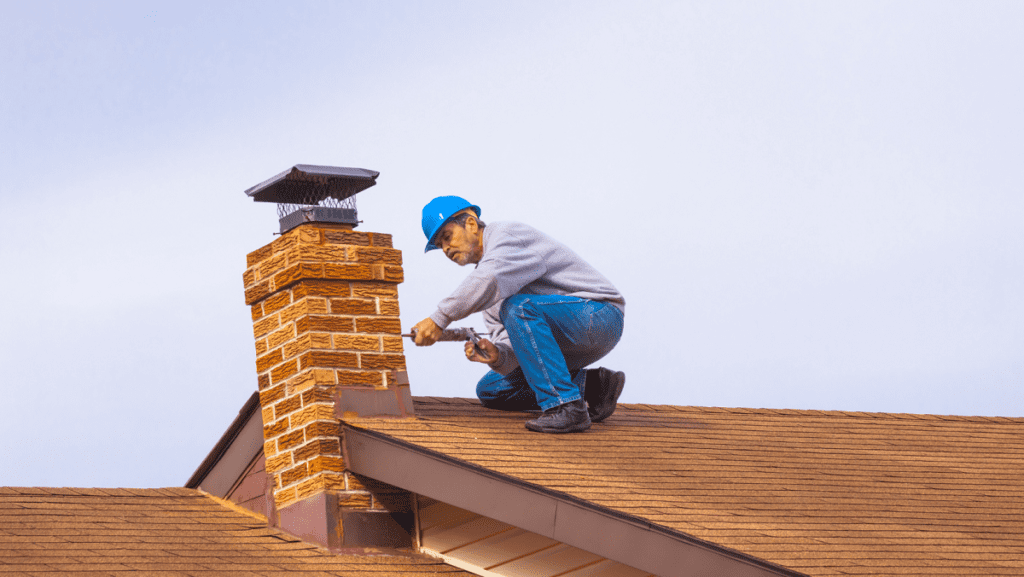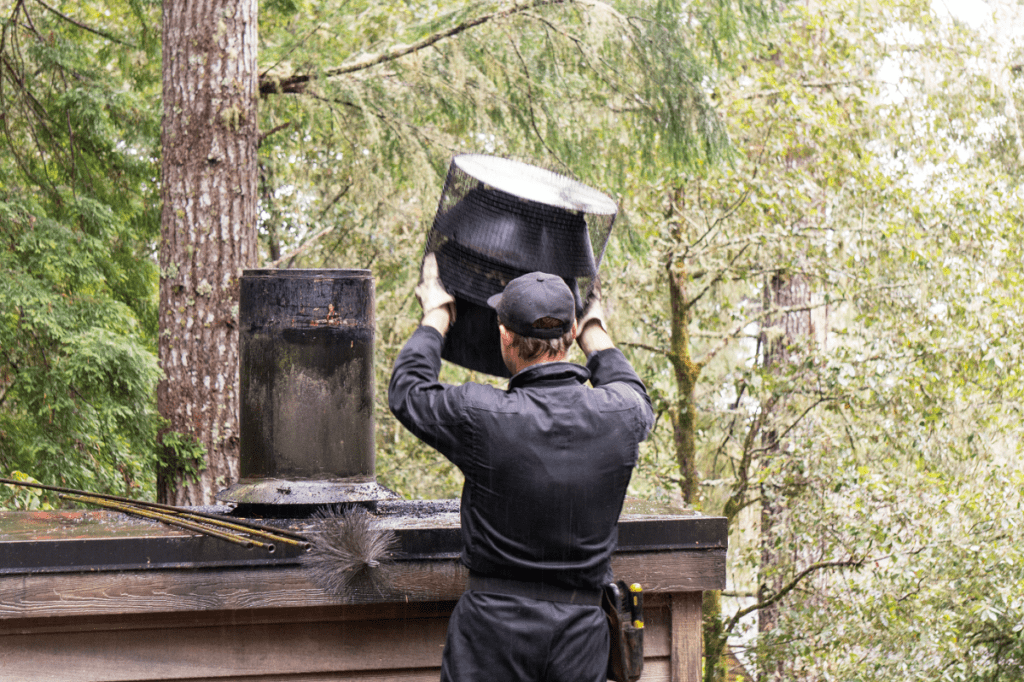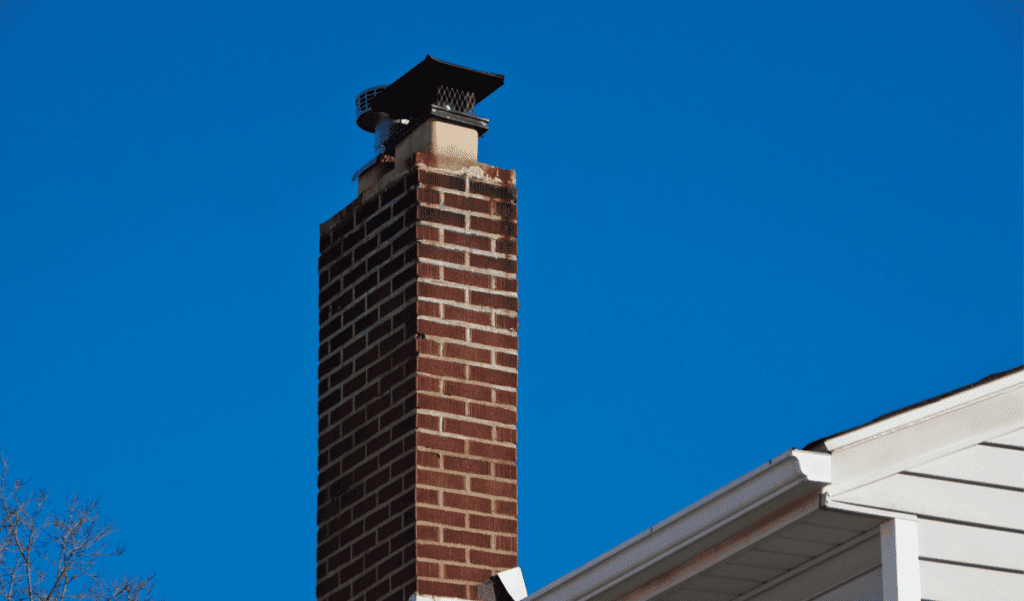
The Importance of Cleaning Chimneys
Chimneys play an important role in our homes by venting out harmful gases and smoke produced by the fireplace. However, if they are not properly maintained and cleaned, chimneys can also pose a serious threat to our safety.
This is because a dirty chimney can easily become clogged with soot and creosote buildup, which can lead to a fire hazard or health concerns. In fact, I learned this lesson the hard way when I was living in an older home with a wood-burning fireplace.
One chilly winter evening, my family and I were enjoying a cozy fire when we suddenly noticed smoke filling up the room. To our horror, we realized that the chimney had become so clogged with debris that it had started to backdraft into our home.
Thankfully, we were able to safely put out the fire and call for professional help. However, this experience taught me just how important it is to regularly clean chimneys to prevent such dangerous situations from occurring.
Why Chimneys Need Cleaning
Chimneys play a crucial role in keeping our homes warm and cozy during cold weather conditions. But like any other appliance, they require maintenance to work effectively. Regular cleaning of your chimney is essential to avoid the buildup of dangerous substances such as soot and creosote.
Explanation of How Soot and Creosote Build-up in Chimneys
Soot is formed when wood, coal, or other fossil fuels are burned. It’s a black powdery substance that sticks to the walls of your chimney over time.
As soot accumulates, it reduces the efficiency of your chimney by narrowing its flue size, leading to poor air ventilation. Creosote is formed when smoke condenses on the inner walls of the chimney.
This tar-like substance is highly flammable and can ignite quickly if not cleaned regularly. Creosote buildup can also lead to obstruction in your chimney’s flue, which prevents toxic gases like carbon monoxide from escaping outwards.
Discussion on the Risks of a Dirty Chimney – Including Fire Hazards and Health Concerns
A dirty chimney poses several risks that can lead to severe consequences. One major risk associated with not cleaning your chimney is fire hazards- an uncleaned chimney will have an excessive amount of creosote that could easily ignite, causing a house fire.
In addition to fire hazards, a dirty or clogged chimney can cause health issues such as respiratory problems due to carbon monoxide inhalation- this gas may leak into your home if there’s an obstruction in your flue caused by creosote buildup. Therefore, it’s important for homeowners to clean their chimneys regularly for their safety and well-being.
RELATED: Soot Happens: The Importance of Hiring a Professional Chimney Cleaning Company
When to Clean Your Chimney
Keeping your chimney clean is a crucial part of maintaining a safe and efficient fireplace or wood stove. Knowing when to clean your chimney is essential for preventing potential hazards. The frequency of cleaning largely depends on how often the fireplace or wood stove is used and the type of fuel burned.
In general, it is recommended that you have your chimney cleaned at least once a year. However, if you use your fireplace or wood stove frequently throughout the winter months, you may need to have it cleaned more often.
For those who burn softwoods like pine, spruce, or cedar, it’s important to know that these types of wood produce more creosote buildup than hardwoods like oak or maple. More frequent cleanings may be necessary for those burning softwoods.
Tips on How Often to Clean Your Chimney
As mentioned earlier, the frequency of cleaning depends on usage and fuel type. If you’re not sure how often to have your chimney cleaned, here are some general guidelines:
- For those who use their fireplace or wood stove regularly throughout the heating season (roughly three months), have it cleaned once a year
- If you use your fireplace or wood stove occasionally during winter months (less than three months), have it cleaned every other year
- Those who burn softwoods should consider having their chimneys cleaned after each cord (128 cubic feet) of wood is burned.
- For those burning hardwoods exclusively, an annual cleaning may suffice.
Remember that these are just guidelines and not hard-and-fast rules. Factors such as location (more humid climates can increase buildup), age of the chimney structure itself, and how well-maintained the appliance is can all impact how frequently you should have your chimney cleaned.
Signs that Indicate It’s Time for a Cleaning
In addition to following a regular cleaning schedule, it’s important to keep an eye out for signs that your chimney needs attention. One of the most obvious signs is a strong odor coming from the fireplace or stove.
This could indicate that there’s a buildup of creosote or other debris. Another sign that it’s time for a cleaning is if you notice smoke back-drafting into the house or coming out of the chimney at unusual times.
This can be caused by an obstruction, such as creosote buildup or even animal nests. If you notice any visible soot or debris inside the fireplace, this could also indicate that it’s time for a cleaning.
Be sure to call in a professional if you’re not comfortable doing this yourself. By keeping an eye on these warning signs and following regular cleaning schedules, you can keep your chimney in top working condition and prevent potential hazards from occurring.
RELATED: Clear the Smoke: The Importance of Chimney Clean and How to Do It Right
How to Clean Your Chimney
An Overview of Different Methods
When it comes to cleaning your chimney, there are a few different methods you can choose from. The most common options include using brushes and rods, vacuums, or chemicals specifically designed for chimney cleaning. Each method has its own benefits and drawbacks, so it’s important to do your research before deciding which one is right for you.
If you’re looking for a DIY option, the brush and rod method is the most popular choice. This involves using a long brush attached to a flexible rod to scrape the walls of your chimney clean.
While this method can be effective, it also requires a lot of physical effort and can be dangerous if not done correctly. Another option is vacuuming out the creosote buildup using specialized equipment made for chimneys.
A Step-by-Step Guide
If you’re planning on cleaning your own chimney, it’s important to follow proper safety procedures and guidelines. Here’s a step-by-step guide to help make sure you do it safely:
- Start by inspecting the exterior of your chimney for any signs of damage or blockages.
- Cover the area around your fireplace with drop cloths or plastic sheeting to protect it from debris.
- Use a flashlight or camera to inspect inside the chimney looking for blockages such as bird nests or excess soot buildup.
- Choose which method you will use (brush and rod/vacuum/chemicals).
- If using the brush and rod method, insert the brush into the bottom opening moving upwards until you have cleaned all interior sides.
- Remove all debris in the fireplace with a broom/dustpan.
- Repeat steps 5-6 if necessary until no more debris falls down. 8) Clean up any remaining debris in the surrounding area.
Cleaning your own chimney can be a challenging task, and if you’re not comfortable doing it yourself, it’s always better to call in a professional. However, following these steps can help ensure that you’re doing it as safely and effectively as possible.
Tools Needed for Cleaning Chimneys
Cleaning a chimney may seem like a daunting task, but with the right tools, anyone can do it. Here are some essential tools you will need for cleaning your chimney:
- Chimney Brush
Perhaps the most important tool you will need is a chimney brush. These come in various sizes and shapes to match your chimney’s dimensions. A good quality brush with stiff bristles is essential to remove all the creosote and soot buildup from the walls of your chimney. To use the brush, connect it to a flexible rod or handle and insert it into the flue. Move it up and down while rotating it to ensure that all areas of the flue are cleaned effectively.
- Vacuum Cleaner
A vacuum cleaner with a HEPA filter is necessary to collect all of the debris that falls into your fireplace or stove during cleaning. This will prevent dust from getting everywhere in your living space and potentially cause health problems. Be sure to use an extension hose on your vacuum cleaner so that you can reach all parts of the chimney during cleaning.
- Chimney Rods
Chimney rods are used in combination with a brush for effective cleaning of longer chimneys or when dealing with blockages within your flue system. Make sure you purchase enough rods to reach from top-to-bottom of your chimney as well as any extensions that may be needed for longer chimneys.
- Protective Gear
Protective gear such as gloves, goggles, and dust masks should always be worn while cleaning chimneys due to potential hazard exposure from creosote dust or other debris falling down during cleanup. Having these essential tools on hand will help ensure that you can clean your chimney safely and effectively while also reducing potential risks associated with this task!
Tips for Maintaining a Clean Chimney
Best Practices for Keeping Your Chimney Clean Year-Round
Cleaning your chimney is essential, but maintaining a clean chimney requires consistent effort. Here are some best practices to keep your chimney clean throughout the year:
- Burn dry firewood: Wet or unseasoned wood produces more smoke than dry wood, leading to an increase in creosote buildup in your chimney. The recommended moisture content of firewood is 20% or less.
- Install a rain cap: Rain caps protect your chimney from rainwater which can contribute to creosote buildup and other issues.
- Keep the area around your fireplace clear: Avoid placing furniture, decorations, or any other items too close to the fireplace as this can block airflow and lead to poor combustion.
- Schedule regular inspections: Even if you clean your chimney regularly, it’s important to have it inspected by a professional at least once per year. A professional inspection can identify any underlying issues that may cause further problems down the line.
Advice on Preventing Future Buildup
Preventing future buildup in your chimney involves being mindful of what you burn and how you burn it. Here are some additional tips:
- Only burn seasoned firewood: As mentioned earlier, burning wet or unseasoned wood leads to an increase in creosote buildup.
- Don’t overload the fireplace: Burning too much wood at once can lead to incomplete combustion and cause excess smoke and soot buildup.
- Use a high-quality fuel source: Lower-quality fuels contain more impurities that lead to increased creosote and soot production.
- Schedule regular cleaning appointments with a professional cleaner: Regular cleaning appointments are essential for keeping your chimney free from debris and ensuring proper ventilation.
By following these tips and best practices consistently, you can maintain a clean chimney year-round and prevent future buildup, ultimately ensuring a safer and more efficient fireplace experience.
Frequently Asked Questions
Why do chimneys need to be cleaned?
Chimneys need to be cleaned to prevent the buildup of soot and creosote, which can restrict the flow of smoke and gases out of the chimney and can even ignite, causing a chimney fire. Regular cleaning also maintains the efficiency of the fireplace or heating appliance and prevents harmful substances from being released into your home.
Is it OK to clean your own chimney?
While it’s possible to clean your own chimney, it’s a potentially dangerous job if not done correctly, as it involves working at height and dealing with hazardous substances. Professional chimney sweeps have the necessary training and tools to clean a chimney safely and thoroughly.
How do you clean a chimney from the inside?
To clean a chimney from the inside, you’ll need a chimney brush that fits your chimney’s dimensions and flexible rods to reach the full length of the chimney. You scrub the interior of the chimney with the brush and rods, pushing the soot and creosote down into the fireplace, where it can be vacuumed up.
How do you clean a chimney naturally?
Cleaning a chimney naturally involves the same mechanical process of scrubbing with a brush and rods but without the use of chemical creosote removers. Some people also burn certain types of wood, such as pine, which can help to loosen creosote buildup, but this is not a substitute for proper mechanical cleaning.
What is the purpose of using a chimney?
The purpose of a chimney is to safely vent smoke, gases, and other combustion byproducts from your fireplace or heating appliance out of your home. It also helps to create a draft that feeds the fire with oxygen.
Why is a chimney important?
A chimney is important because it ensures the safe operation of a fireplace or heating appliance. Without a properly functioning chimney, harmful gases like carbon monoxide can build up in your home, and the risk of fire can increase due to creosote buildup.
Conclusion
Key Points About Why and How to Clean Your Chimney
Cleaning your chimney is an essential task that should be carried out regularly to ensure the safety and efficiency of your heating system. As we’ve discussed, soot, creosote, and other debris can accumulate in your chimney over time, which can lead to numerous problems like health concerns or even fire hazards. It’s important to understand the risks involved with a dirty chimney and take measures to prevent them.
The good news is that cleaning your chimney doesn’t have to be a daunting task. With the right tools and knowledge, you can clean it yourself or hire a professional service to do it for you.
We’ve gone over both options in detail, including how often you should clean your chimney and what signs indicate it’s time for a cleaning. By following these guidelines, you’ll be able to maintain a clean and safe chimney year-round.
Maintaining a clean chimney should be at the top of every homeowner’s priority list. A dirty chimney not only poses risks to your health and safety but also affects the efficiency of your heating system.
By investing time in regular cleaning and maintenance, you’re ultimately making an investment in your home’s longevity. Now that we’ve covered everything there is to know about cleaning chimneys – why they need cleaning when they need cleaning, how to do it yourself, or hire professionals – we hope you feel confident in taking care of this important aspect of homeownership.
Remember: an ounce of prevention is worth a pound of cure! By staying on top of maintenance tasks like this one, you’ll save yourself time and money down the road while ensuring peace of mind all winter long.






